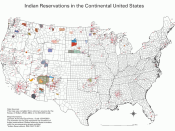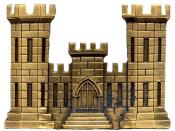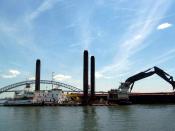03/04 Annual Edition
The Lost Man
In the article, "The Lost Man," author Douglass Preston, address the findings of Kennewick Man, a nine thousand three hundred year old fossil. It was founded in Kennewick, Washington, thus getting the name "Kennewick Man," by two college students. James Chatters, a forensic anthropologist was called to identify the skull and projected the skull as having "Caucasoid features," with a long narrow braincase, a narrow face, and a slightly projecting upper jaw. Having found the bones in federal land belonging to the Native Americans, Chatters had to identify age, sex and race. With a little more thorough examination of the skull and finding the rest of the skeleton, Chatters determined that the skeleton was male. Between forty and fifty-five years old and five feet nine inches tall. This was quiet surprising considering prehistoric Native Americans were much shorter in height. With skepticism of it just being a male skeleton, the bones were sent to get a radiocarbon date, resulting of being 9,300 years old.
Such an astounding find, blew the mind of Chatters and anthropologists around the world. Others like the "Army Corps of Engineers," were not excited about the findings and told Chatters to stop any further examination of Kennewick Man. More contradiction formed, when the Umatilla Indians, claimed the skeleton under NAGPRA. This stood for Native American Graves Protection and Repatriation Act, giving the Native American rights to take the skeleton. Since the skeleton was found on the stretch of the Columbia River, of which the Army Corps of Engineers controlled, they determined what the future held for Kennewick Man.
So, what were the reasons of hiding the old skeleton away from science? First, many Native Americans are tired of having skeletons of their ancestors examined and put in museums.


